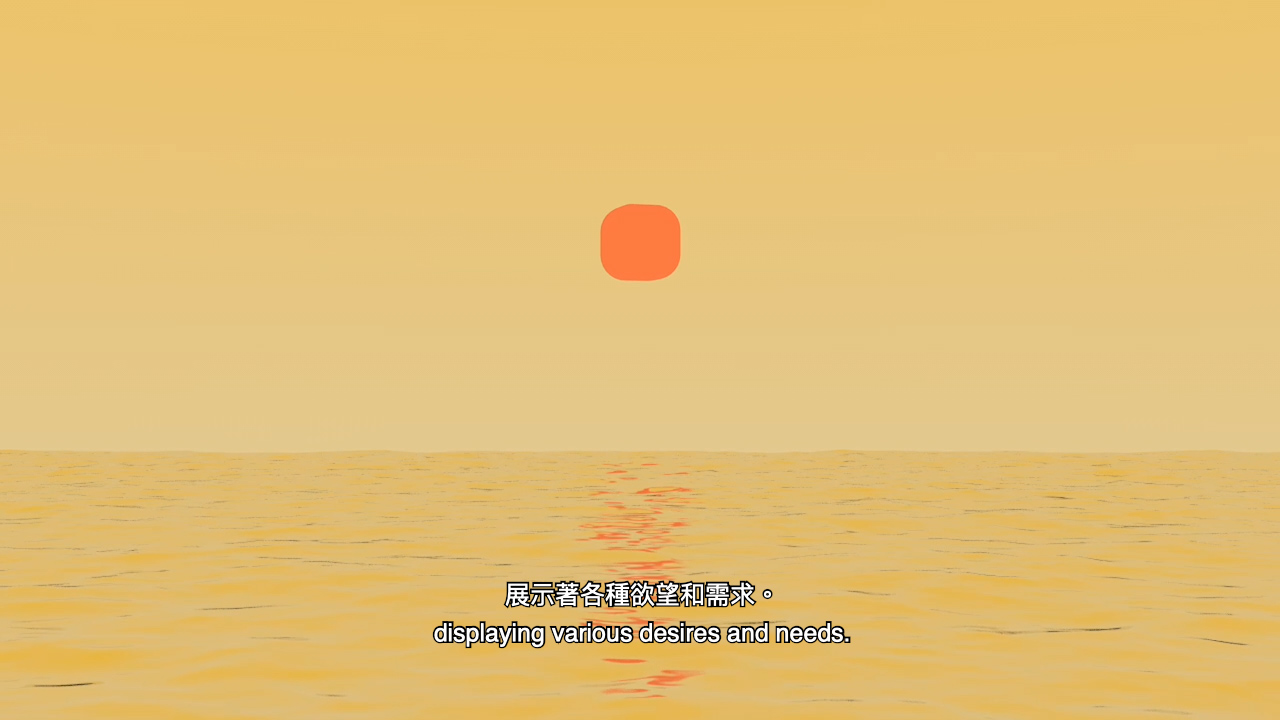New Currents: Dony Cheng Hung
By Alex Yiu


Stills from DONY CHENG HUNG’s The Landscape of the World of Straight Lines, 2024, single-channel video: 4 min 5 sec. Courtesy the artist.
Artists throughout history have revered the square’s symbolic potential: Leonardo da Vinci used it to represent the ideal form of humanity in Vitruvian Man (c. 1490), while it is treated as a spiritual, revolutionary emblem in the Suprematist artist Kazimir Malevich’s Black Square (1915). Hong Kong artist Dony Cheng Hung follows this tradition, but in her work the congruent shape takes a psychological turn. A graduate from the Chinese University of Hong Kong, obtaining a bachelor’s and master’s degree in fine arts in 2017 and 2023, respectively, the artist has established a practice that spans video, painting, and installation to explore the flux between perception and emotion.
In university, Cheng’s work often depicted isolation and solitude in urban environments, resulting in subdued, minimalistic compositions. Her miniature oil-on-canvas Room (2016) portrays an empty concrete interior in which a square-shaped opening in the wall leads to a blue sky; it also casts a shadowy silhouette on the floor, evoking a paradoxical sensation. The geometric element persists in later paintings such as At the bus stop of going back (2018), where on the charcoal-painted walls of a faintly lit bus stop hangs another square, this time resembling a life-devouring ebony void comparable to Malevich’s Black Square. The motif saw a breakthrough in Cheng’s 3D-animated, subtitled video Sunset as a place (2020), which visualizes an evolving twilight at sea. Floating above the ocean, her quadrilateral signature turns into a glowing, three-dimensional cube that shapeshifts into a sun-like ball, sinking away from the viewer. This scene forms a composition that at once recalls René Magritte’s surrealist paintings while also alluding to the post-internet aesthetics of virtual worlds.
The uncanny spaces Cheng builds offer a transient place of memory, an indeterminate world void of history, identity, and relationality akin to what the French anthropologist Marc Augé defined as “non-place.” Her video The Landscape of the World of Straight Lines (2024) takes this concept to its extreme as she imagines a post-apocalyptic “non-place” full of her cubes. Free from any distinction between the indoors and outdoors or day and night, this world’s only inhabitants are Cheng’s memories and emotions.
Alex Yiu is associate editor at ArtAsiaPacific.








